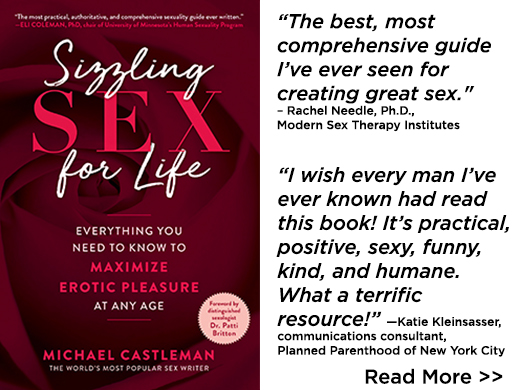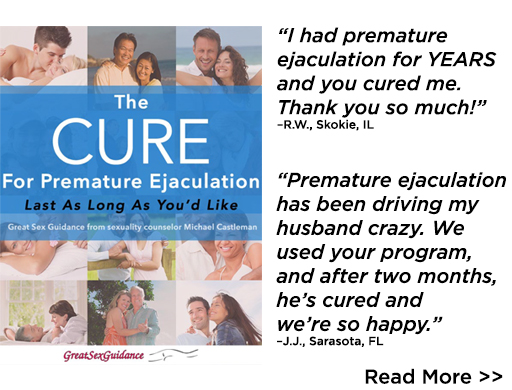
It’s starting to look like age-related prostate enlargement contributes to ED.
Erectile dysfunction (ED) has many well-documented risk factors, notably age and cardiovascular disease, but prostate enlargement is not among them. That may soon change. Research over the past decade has suggested that early-onset noncancerous prostate enlargement (benign prostatic hyperplasia, BPH) is linked to early ED. The association, if any, remains murky. Researchers don’t know if BPH is a true risk factor, or if the same processes that produce BPH also contribute to ED. But it’s starting to look as though men with early BPH are at increased risk for early ED.
The Pesky Prostate
The prostate (not prostrate—no “r”) is a walnut-sized, donut-shaped gland located below the male bladder. It produces most of the fluid in semen. The prostate also has the urethra running through it, the tube that carries urine and semen out of the body.
Unless it gets infected, the prostate remains so unnoticed that many men hardly know they have one. But after age 30, the little gland starts growing
Prostate growth might signal prostate cancer. That’s why men over 45 should have annual prostate exams. But most midlife prostate growth is noncancerous BPH, which starts to cause symptoms in some men in their forties, and in most by 60.
As BPH progresses, the swelling prostate pinches the urethra. This is painless, but it causes urinary difficulties:
- Feeling a sudden need to urinate immediately (urgency).
- Difficulty getting started (hesitancy).
- Weak flow.
- Difficulty finishing (dribbling).
- And having to get up at night to urinate one or more times (nocturia).
Men’s prostates balloon because of age-related hormonal changes. After around 40, men’s blood levels of free testosterone decline, while other hormone levels increase, notably, prolactin. These changes increase prostate levels of an auxiliary male sex hormone, dihydrotestosterone, which is responsible for the mid-life prostate growth and BPH. Bay age 50, BPH affects around half of men, and more with increasing age.
Testosterone requires an enzyme to become dihydrotestosterone, 5-alpha-reductase. Leading BPH treatments work by interfering with its action.
Coincidence or Contributor?
BPH and ED have several elements in common:
- Both develop during the same stage of life, after around 45.
- Both tend to get worse with age.
- Recent research suggests that the two conditions share some physiological mechanisms.
- The nerves that control erection run right next to the prostate. That’s why prostate cancer treatment often causes ED. It damages those nerves. It’s also possible that prostate enlargement may pinch these nerves and contribute to ED.
- Treatment of ED, especially with Cialis, may improve BPH symptoms.
- Treatment of BPH may cause sexual side effects, notably erection impairment. The treatment most closely associated with erection problems is finasteride (Proscar).
The connection, if any, between BPH and ED remains unexplained. But European researchers have documented “a strong and consistent association between BPH and ED.” And in a review of this line of research, New York University urologist Jed Kaminetsky, M.D., went even further, asserting that BPH “is an independent risk factor for ED.”
Bottom line:
- The younger a man is when diagnosed with BPH, the more likely he is to develop ED on the early side of aging.
- Men who develop symptoms of either BPH or ED should ask their doctors to evaluate them for both conditions.
- BPH treatment may have no impact on sexual function, or possibly even improve it. But BPH treatment, especially with finasteride, may precipitate or aggravate ED. Unfortunately, doctors rarely alert men to this possibility.
You might also like to read – Kegel Exercises: More Pleasurable Orgasms
References:
Brock, G.B. et al. “Direct Effects of Tadalafil on Lower Urinary Tract Symptoms Vs. Indirect Effects Mediated Through Erectile Dysfunction Symptom Improvement: Integrated Data Analyses from 4 Placebo-Controlled Clinical Studies,” Journal of Urology (2014) 191:405.
Brousil, P. et al. “PDE-5 Inhibitors for BPH-Associated LUTS,” Current Drug Targets (2015) 16:1180.
Fusco, F et al. “BPH/LUTS and ED: Common Pharmacologic Pathways for a Common Treatment,” Journal of Sexual Medicine (2013) 10:2382.
Gacci, M et al. “A Systematic Review and Meta-Analysis on the Use of Phosphodiesterase 5 Inhibitors Alone or In Combination with Alpha-Blockers for Lower Urinary Tract Symptoms Due to Benign Prostatic Hyperplasia,” European Urology (2012) 61:994.
Gacci, M. et al. “Critical Analysis of the Relationship Between Sexual Dysfunction and Lower Urinary Tract Symptoms Due to Benign Prostatic Hyperplasia,” European Urology (2011) 60:809.
Gilna, S. et al. “Sexual Function in Men with Lower Urinary Tract Symptoms and Prostatic Enlargement Secondary to Benign Prostatic Hyperplasia: Results of a Six-Month Randomized, Double-Blind, Placebo-Controlled Study of Tadalafil Co-Administered with Finasteride,” Journal of Sexual Medicine (2015) 12:129.
Giuliano, F. et al. “Tadalafil Once Daily Improves Ejaculatory Function, Erectile Function, and Sexual Satisfaction in Men with LoweErectile Dysfunction: Results from a Randomized Placebo- and Tamsulosin-Controlled 12-Week Double-Blind Study,” Journal of Sexual Medicine (2013) 10:857.
Kaminetsky, J. Comorbid LUTS and Erectile Dysfunction: Optimizing Their Management,” Current Medical Research and Opinion (2006) 22:2497.
Lee, J.H. et al. “Association of Lower Urinary Tract Symptoms/benign prostatic hyperplasia Measures with International Index of Erectile Function 5 in Middle-Aged Policemen of Korea and the Role of Metabolic Syndrome and Testosterone in Their Relationship,” Urology (2013) 82:1008.
Porst, H. et al. “Effects of Tadalafil on Lower Urinary Tract Symptoms Secondary to Benign Prostatic Hyperplasia and on Erectile Dysfunction in Sexually Active Men with Both Conditions: Analysis of Pooled Data from Four Randomized, Placebo-Controlled Tadalafil Clinical Studies,” Journal of Sexual Medicine (2013) 10:2044.
Roehrborn, C.G. et al. “Erectile Dysfunction and Lower Urinary Tract Symptoms Associated with Benign Prostatic Hyperplasia (LUTS/BPH) Combined Responders to Tadalafil After 12 Weeks of Treatment,” BJU International (2016) 118:153.
Stojanovic, N. and D. Bogdanovic. “Improvement of Sexual Function in Men with Benign Prostatic Hyperplasia By Pharmocologic Therapy,” Srp Arh Celok Lek (2014) 142:572.
Traish, A.M. et al. “Finasteride, Not Tamsulosin, Increases Severity of Erectile Dysfunction and Decreases Testosterone Levels in Men with Benign Prostatic Hyperplasia,” Hormone Molecular Biology and Clinical Investigation (2015) 23:85.
Yan, H. et al. “The Efficacy of PDE5 Inhibitors Alone or in Combination with Alpha-Blockers for the Treatment of erectile Dysfunction and Lower Urinary Tract Symptoms Due to Benign Prostatic Hyperplasia: A Systematic Review and Meta-Analysis,” Journal of Sexual Medicine (2014) 11:1539.





